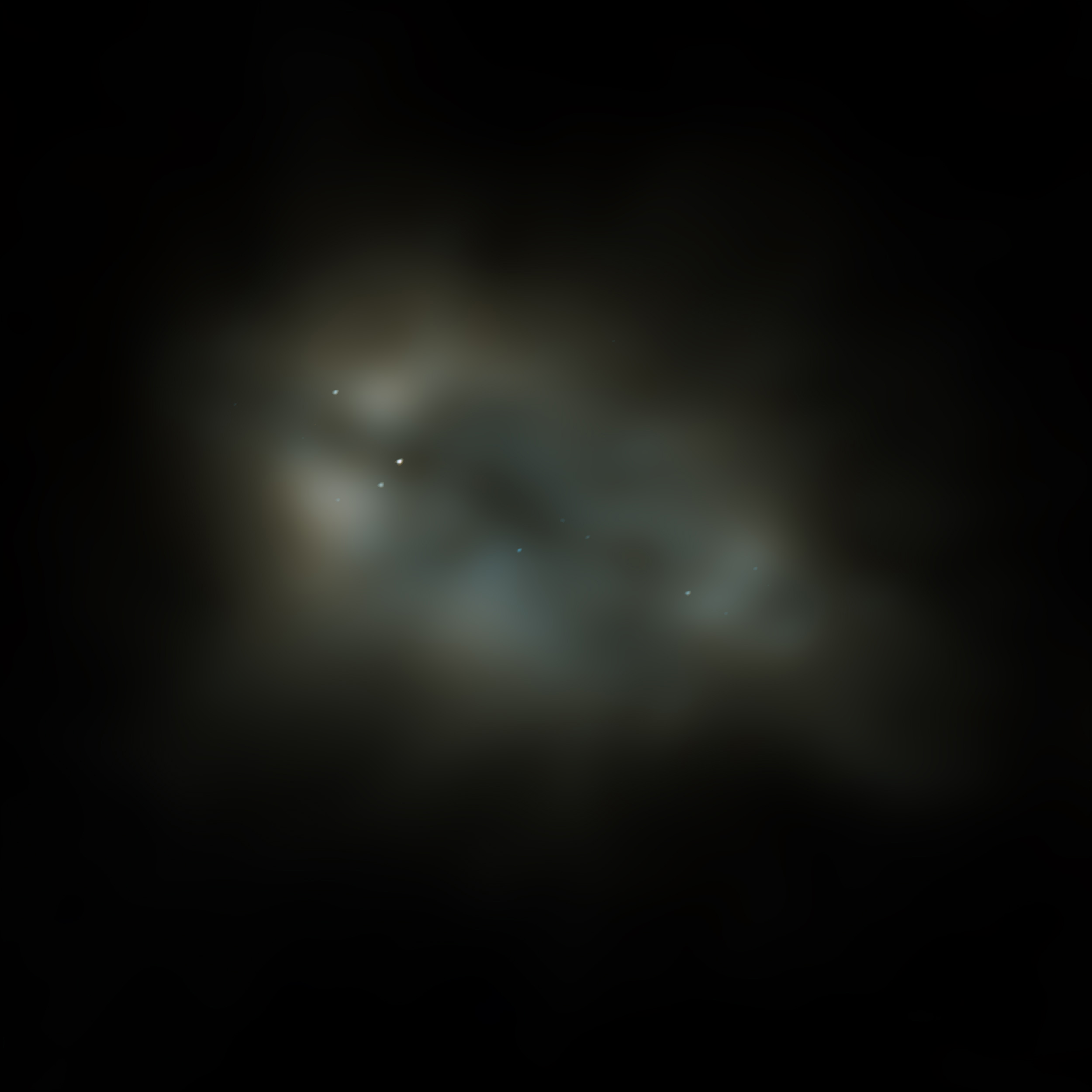Daily Image
13-02-2015LOFAR's record-sharp view of the starburst galaxy M 82
| Submitter: | Eskil Varenius |
| Description: | The International LOFAR Telescope (ILT) has taken a new image of the centre of the starburst galaxy Messier 82 (M 82), at a distance of 3.5 megaparsecs. This image was made including the telescope's international baselines, making use of four stations in Germany, and one each in the UK, France and Sweden together with internal Dutch baselines. The maximum 1000 km baselines allowed us to achieve a resolution of 0.3 arcsec, with image noise as low as 150 microJansky per beam, at a wavelength of 1.9 metres. The image is a composite of two observed radio bands, 2.5 m/118 MHz [orange] and 1.9 m/154 MHz [blue], and covers about 3 kiloparsecs at the distance of M 82. The multi scale image shows compact unresolved supernova remnants embedded in diffuse emission (sampled by the 100 km Dutch remote baselines). This image demonstrates that, despite ionospheric propagation effects, high-resolution high-sensitivity images can be made at metre-wavelengths; both using the baseline lengths envisioned for SKA1-low and also using longer many thousand kilometre baselines that could be deployed in later stages of the SKA project. In the image we see the effects of strong free-free absorption in the star-forming disk of M82, with brighter emission found below and above this disk. The radio continuum spectra of the compact sources show a variety of shapes implying patchy free-free absorption. We expect detailed analysis of the spectra of both the diffuse and compact components to be able to constrain the distribution of ionised gas in the centre of this starburst galaxy, and whether or not this ionised gas is well mixed with the synchrotron emitting gas. Read the full press-release about this image at Chalmers. The research is described in the paper "Subarcsecond international LOFAR radio images of the M82 nucleus at 118 MHz and 154 MHz" by E. Varenius et al., published in Astronomy & Astrophysics. A version of the paper is available online at Arxiv. |
| Copyright: | E. Varenius/Onsala Space Observatory/LOFAR collaboration |
| Tweet |  |
